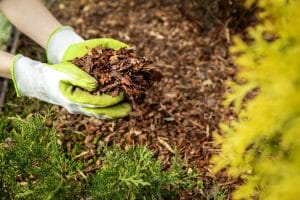Trimming, Cutting, and Pruning: Shaping Your Trees for Optimal Health and Beauty
When it comes to keeping your trees healthy and looking their best, regular trimming and pruning are essential. Not only do these activities improve the aesthetics of your landscape, but they also promote the overall health of your trees. In this article, we will explore the significance of tree trimming and pruning, discuss various techniques used, and provide some tips for DIY enthusiasts.
The Significance of Regular Tree Trimming and Pruning
Regular tree trimming and pruning play a vital role in maintaining the health and beauty of your trees. Firstly, trimming helps to remove dead, damaged, or diseased branches, preventing them from becoming a liability. These weakened branches can pose a safety risk, as they are more likely to fall during storms or high winds. By removing them promptly, you reduce the chances of accidents and property damage.
Furthermore, trimming and pruning enhance the aesthetics of your trees. Overgrown or unruly branches can make your landscape appear untidy and unkempt. By selectively removing branches or shaping the tree, you create a more visually pleasing and manicured appearance. This can significantly improve the curb appeal of your property and increase its value.
The Various Techniques Used in Trimming and Pruning Services
Tree trimming and pruning services utilize various techniques to ensure optimal results. One common technique is crown reduction. This involves reducing the height or spread of the tree’s canopy by cutting back specific branches. Crown reduction is beneficial when a tree has outgrown its space or if there are branches interfering with utility lines or structures. It helps to maintain a balanced and pleasing shape while preserving the overall health of the tree.
Deadwood removal is another important technique used in trimming and pruning. Deadwood refers to branches that have died naturally or due to disease. These branches not only detract from the tree’s appearance but also create a hospitable environment for pests and diseases. By removing deadwood, you not only improve the aesthetics but also minimize the risk of potential infestations or infections that can spread throughout the tree.
Tips and Guidelines for DIY Trimming Tasks
While minor trimming tasks can be performed by homeowners, it is important to recognize the limitations of DIY tree care. If you plan to tackle small trimming jobs yourself, keep in mind the following tips. First, invest in proper tools such as pruning shears or loppers, depending on the branch thickness. Make clean cuts at a slight angle, just outside the branch collar, to promote healing.
When trimming, avoid removing more than 25% of the tree’s branches, as this can cause stress and affect its health. Also, ensure you have a clear plan in mind before starting. Identify the branches you wish to remove and carefully assess their impact on the tree’s overall structure. Finally, always prioritize safety. Use protective gear, be mindful of falling branches, and never attempt to trim trees near power lines or in risky situations.
The Importance of Professional Services for Larger or Riskier Jobs
While DIY trimming tasks can be satisfying, it’s essential to know when to call in the professionals. For larger or riskier trimming jobs, it’s best to rely on experienced arborists who have the expertise and equipment to handle the task safely and effectively. They can assess the health of your trees, identify potential issues, and provide tailored solutions.
Professional tree trimming and pruning services are particularly crucial for trees in urban areas or near structures. These situations require careful planning and precision to avoid any damage to your property or nearby infrastructure. Additionally, professional arborists have the necessary training to determine the right time for trimming and pruning, ensuring the long-term health and vitality of your trees.
In conclusion, regular tree trimming and pruning are vital for maintaining the health and aesthetics of your trees. It helps to prevent accidents, improves the visual appeal of your landscape, and promotes the overall well-being of your trees. While DIY enthusiasts can perform minor trimming tasks, it is crucial to rely on professional services for larger or riskier jobs. By investing in proper tree care, you can enjoy the beauty and benefits that healthy, well-shaped trees bring to your outdoor space.



